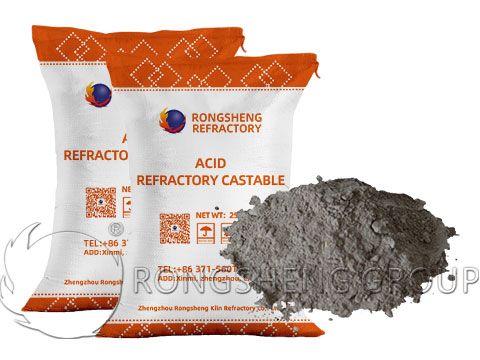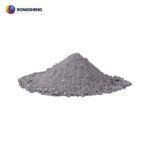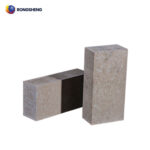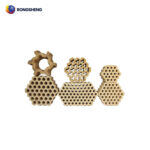Choosing Refractories for Glass Kiln Furnaces
Glass kiln furnace is thermal equipment used for glass melting production. When choosing refractories used in glass kiln furnace, these factors such as furnace types, application parts, damage mechanisms, glass categories, colors and so on should be considered. Glass melting furnace refractory materials should have excellent molten glass and gases corrosion resistance. Besides, they should also have enough refractoriness under load temperature and thermal shock resistance.
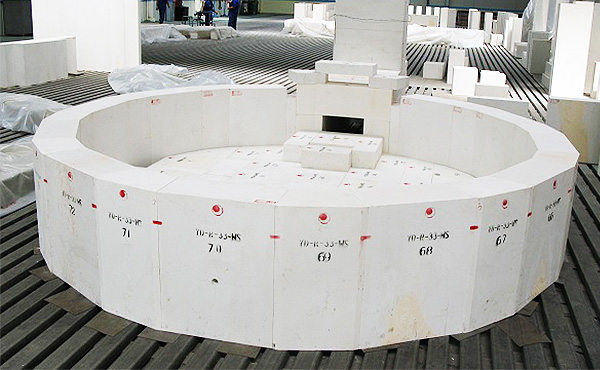
1. Glass furnace fireclay bricks
Fireclay bricks belong to acidic refractory products, it has certain corrosion resistance to acid corrosion, but lower alkali corrosion resistance. Therefore, fireclay brick is suitable for building acidic glass furnace.
Glass melting furnace fireclay bricks are usually fireclay blocks with at least 50kg unit weight. In the regenerator lower part rider arch and lower part check bricks, power materials and volatiles corrosion is not severe, the temperature is also relatively low, but the load is large, so fireclay blocks used here should have enough mechanical strength, they can contain some ratio of SiO2 and Fe2O3. But for high-temperature parts, which require high refractoriness of fireclay blocks, impurities content should be low.
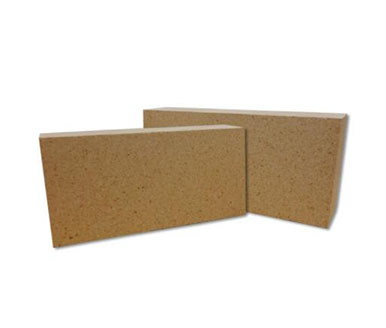
2. Silica bricks
Silica bricks also belong to acidic refractory bricks, they have strong acidic slag or molten liquid corrosion resistance, as well as high-temperature performance. For example, refractoriness is about 1690~1730℃, refractoriness under load beginning temperature is about 1640~1680℃, and volume expansion rate is relatively large. At 1450℃, the total volume expansion is favorable for the structural strength and air-tightness of the brickwork. So silica bricks are the main refractory bricks for glass furnace construction, they are widely used in the main arch, breast wall, regenerator top, and so on.
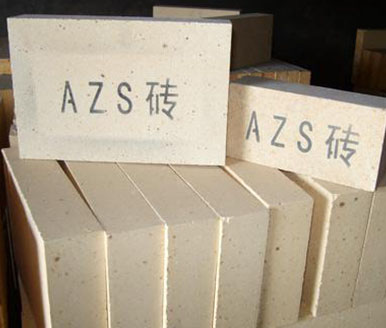
3. Fused zirconia corundum bricks
Fused zirconia corundum bricks are also called fused AZS bricks. Fused AZS bricks have high glass liquid corrosion resistance and very little pollution of glass liquid.
AZS-33 bricks is not prone to form agglomeration or bubble in molten glass, so it is suitable for melting tank upper structure, working tank sidewall and surface paving bricks, charging channels and so on.
AZS-36 is standard oxidizing fused zirconia corundum brick, it has high glass liquid corrosion resistance and low contamination, so it is suitable for parts where contact with glass liquid directly, such as melting tank sidewall bricks, bottom surface bricks, charging notch and so on.
AZS-41 is highest grade fused zirconia corundum brick. It has the best molten glass corrosion resistance and the lowest glass contamination. It is suitable for glass furnace locations where have highest corrosion resistance requirement, such as fused melting furnace, kiln throat, charging notch corner, weir, bubbling bricks, etc.
4. Fused corundum bricks
Fused corundum bricks have high rigidity, good scouring resistance, good abrasion resistance and corrosion resistance. Fused α-Al2O3 bricks, is mainly used in glass kiln furnaces, it is suitable for borosilicate glass and opal glass production. But is high temperature corrosion resistance is not so good, so in some borosilicate glass furnaces, fused quartz bricks are adopted. But fused corundum bricks won’t pollute glass liquid, below 1350℃, it has good glass liquid corrosion resistance and excellent abrasion resistance, so fused corundum bricks are ideal for clarification part, cooling part, working tank and so on.
β-Al2O3 bricks has lower mechanical strength and large volume shrinkage, so it is only suitable for upper structure where only has SiO2 dust corrosion, for example, working tank upper structure, combustion nozzle adjacent breast wall, port nozzle and suspension wall, etc. β-Al2O3 bricks don’t react with volatile alkali metal oxides, so there won’t form molten pollutants.
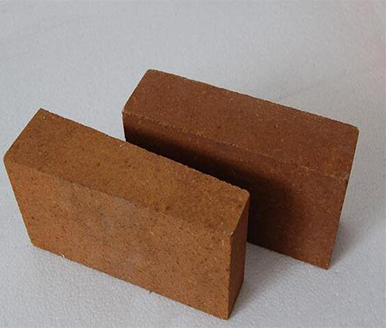
5. Magnesia refractory
Glass furnace regenerator checkerwork top layer usually adopts high grade magnesia bricks, upper layers usually adopts middle grade magnesite bricks, middle layers usually used direct bonded magnesite chrome bricks, lower layers adopts low porosity fireclay bricks. Corrosion resistance and creep resistance are important performances of checkerwork, so high purity, low iron content, low porosity and large grains raw material should be adopted for magnesia bricks production.
When petrol coke is used as fuel, glass melting furnace refractory is easy to be corroded, so high purity magnesia alumina spinel bricks which have better corrosion resistance and better oxidization-reduction atmosphere change adaption can be adopted. High purity magnesia alumina spinel bricks also have good creep resistance and alkali vapor corrosion resistance, so it can also be used in pure oxygen combustion glass furnaces.
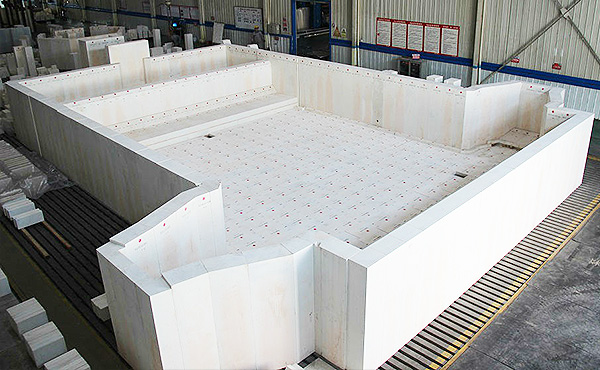
6. Insulating refractory materials
To save energy, heat preservation structures are more and more popularly used in glass kiln furnaces, such as fireclay insulating bricks, silica insulating bricks, diatomite bricks, insulating castable, insulating ramming mass, ceramic fiber refractory, etc.

